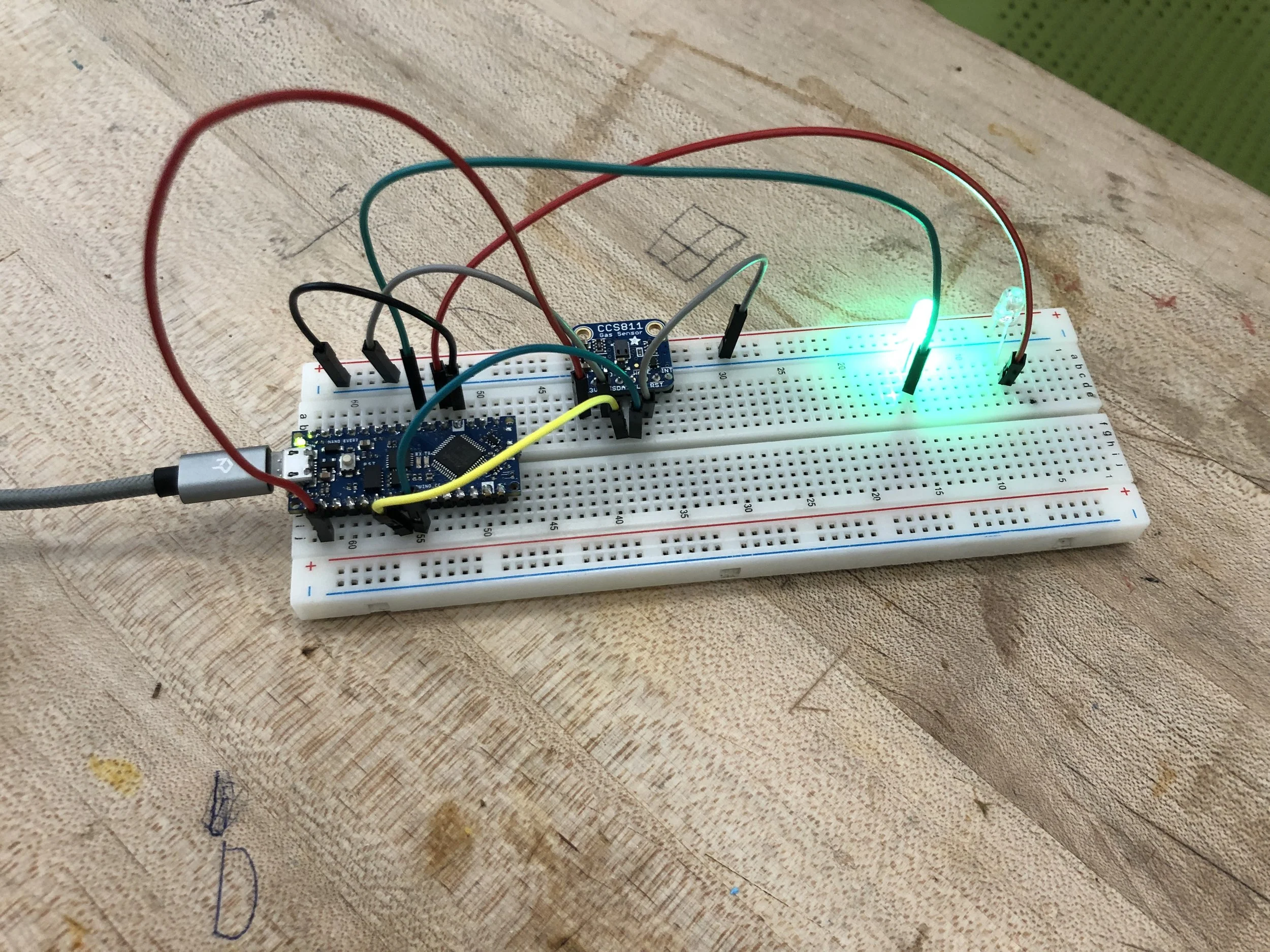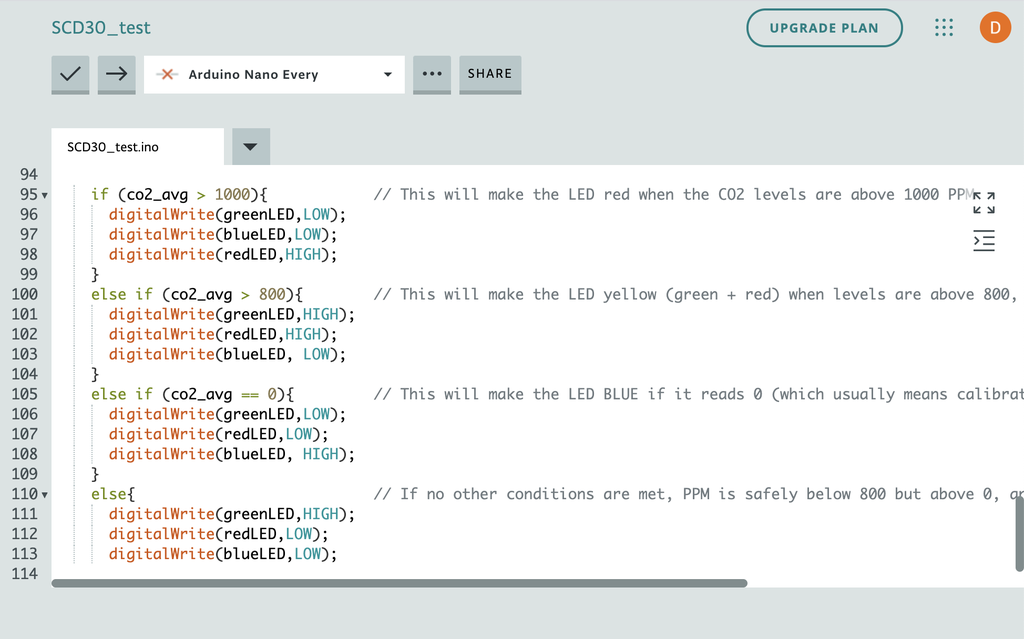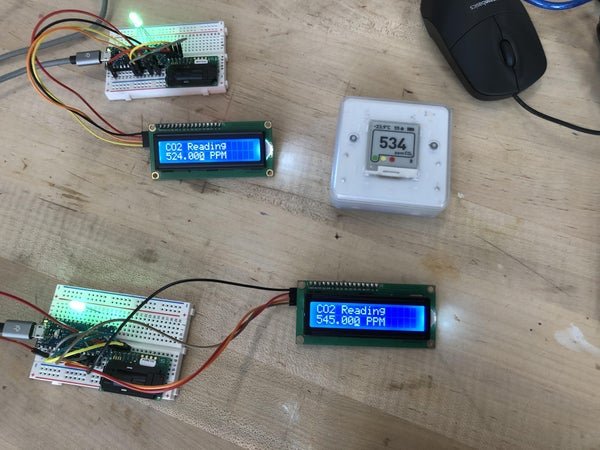When the COVID-19 pandemic hit, the students of the Design & Innovation Program asked, “what can we do to help?” we were hopeful they could contribute, but at that time we didn’t realize then that their skills would be so useful to monitoring the safety of our own campus.
In the Spring of 2020, many students made door openers, bag carriers, face shields, plexiglass barriers and other touch-related items - great projects for what we knew about the virus at the time. Strategically, though, we chose not to turn the Lab into a makeshift manufacturing plant - that is not what we or our machines do best, and there was too much still unknown.
As many expected, our knowledge of the way COVID-19 spreads changed rapidly. Dr. Krahn gathered information from the LJCDS COVID Advisory Taskforce, and instead of focusing only on the items we touch, we learned that the students needed to focus on the air we are breathing. There are many articles about the historical reasons why the public focused on fomites (touchable objects carrying the virus), rather than aerosols (small, airborne particles that may not drop onto surfaces), but we now know that aerosols are a key component in widespread infection.
In particular, Dr. Krahn had meetings with Dr. Kim Prather, a UCSD Professor and a leading expert regarding aerosols in the world, and turned our attention to a simple way to measure the clean air in our classrooms - CO2 (carbon dioxide) levels. Traditional schools can have some of the most densely packed rooms in the country - more than a typical office building, certainly. In most rooms, the amount of CO2 present is a good indicator of how much previously-exhaled air is in the space. Higher CO2 means more “recycled” air, which can mean high potential levels of COVID aerosols - so this is a vital measure for the safety of our school.
Through our own research, we discovered that CO2 sensors are easily accessible and programmable through basic electronic engineering knowledge. Conveniently, gathering data from sensors is the usual electronics sensor unit in the ‘Innovation Technology Studio’ class, and therefore is a skill many Design & Innovation students have.
With the guidance of Robin Robinson (Innovation Lab Supervisor) and Dan Lenzen (Director), the students moved quickly and in a collaborative process across multiple classes to take on various aspects of a large-scale Air Quality Monitoring project:
Taylor Hansen in Advanced Application Development: Data Collection
Daven Gujral in Advanced Design and Innovation: Efficient Housing
John Guckian in 3D Modeling Flex & Innovation Tech Studio: 3D Printed Housing
The students of Innovation Tech Studio: Large production of CO2 Sensors
The team, for early feedback, installed a prototype with an LCD screen showing the CO2 Parts Per Million (ppm) into various classrooms. For reference, outdoor air is just over 400ppm, poorly ventilated classrooms and schools can reach 4000ppm, and anything below 800ppm indicates very good ventilation for preventing COVID spread. They discovered through multiple professional tests, as well as these sensors, that the air quality in LJCDS classrooms is spectacular - rarely reaching over 500ppm in most classrooms - due to the strong ventilation and filtration measures the Operations Department has implemented.
What makes a true Design project is having real users - this is not a project that they will take a picture of and then put in the trash. Ms. Poliner’s Middle School Science students used the sensors to test the effectiveness of different fan configurations. Future projects will connect Upper School Science and Math with the sensors to run experimental and data science projects. Additionally, if anyone else wants to follow the methods and create a sensor unit for themselves, they are available online.
The team is proud to have a process that integrates vital learning objectives with real world applications - exactly what makes the LJCDS Design & Innovation program a leading program in the country. We are sharing our work through open-source development sites and educational channels - hopefully today we are Inspiring Greatness for a Safer World.








